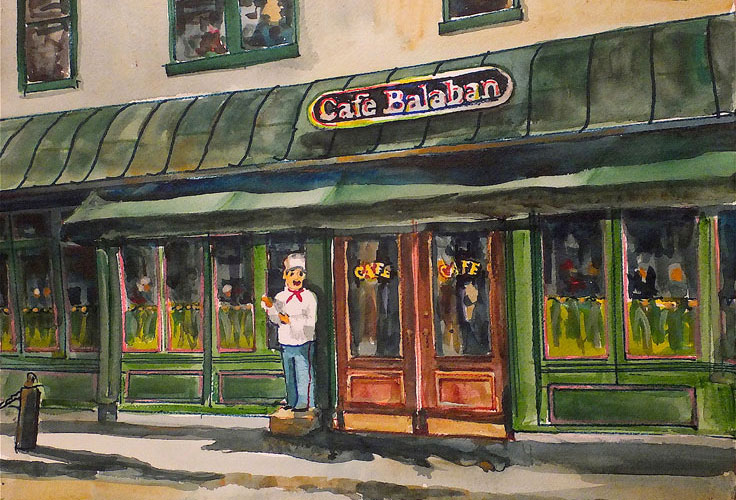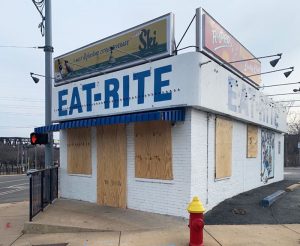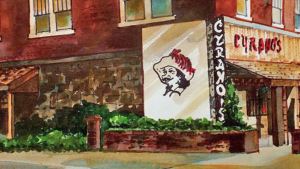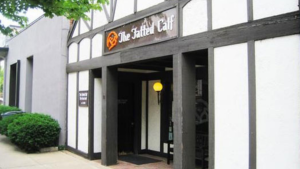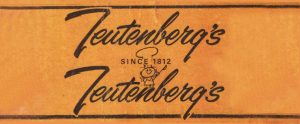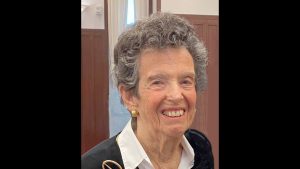Lost Tables: Remembering Balaban’s
Published September 26, 2021
Have you ever wondered what happened to that restaurant you once loved and have memories of dining at with your family and friends? We did! There is an amazing website called Lost Tables, dedicated to celebrating the restaurants of our past. We are partnering with the site’s creator Harley Hammerman and celebrating these wonderful stories. Hammerman and his wife Marlene are members of Shaare Emeth, and she is past president of the National Council of Jewish Women of St. Louis. Visit Lost Tables on Facebook
Herbert J. Balaban was born in Chicago on February 24, 1930 to Max and Dena Balaban. Two years later, Herb’s father died and the family moved to Europe. Returning five years later, Dena Balaban met I. L. Carp, a St. Louisan who owned a chain of department stores. They married and moved to St. Louis.
Herb Balaban Carp graduated Country Day School in 1948, attended Washington University and the University of Missouri, and then went into business with his stepfather. In 1955, he married Nedra Anderwert.
Herb loved antiques and objects d’art. In 1959, he opened H. Balaban Carp Antiques at 335 North Euclid. In 1962, he purchased the property at 401-11 North Euclid, at the northwest corner of Euclid and McPherson. After restoring and remodeling the property, he moved H. Balaban Carp Antiques to the building’s corner space.
By the end of the decade, Herb had transformed his 401 North Euclid space into the Gypsy Cowboy – a chic clothing boutique with a western accent. It had the appearance of a prairie trading post, with rough brick walls, exposed wood beams and unpolished wood floors. Stuffed birds seemed to swoop down from the ceiling, enormous American flags hung from the beams and a collection of animal horns were mounted on the wall.
The Gypsy Cowboy had a regular visitor, Adalaide Daley – the future Mrs. Herb Balaban Carp. Herb had been divorced for some time.
I did go to the Gypsy Cowboy from time to time. The first time I met Herbie was there. He asked my name and when I told him he said, “Herbie and Adalaide. We should have been able to do better than that. What are you doing Saturday night?” We did go out that Saturday night and we never parted.
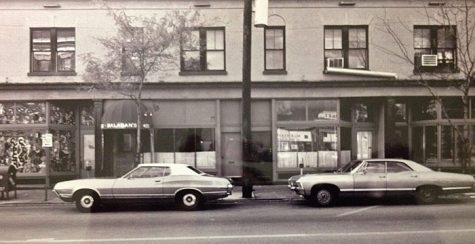
Adalaide, an attractive strawberry blonde, was a social worker with the Missouri State Welfare Department. She was from Houston, where she said it was customary to take a person’s coat and immediately start feeding them. She read cookbooks like they had a plot and was paranoid about her soup recipes.
The space next door to the Gypsy Cowboy – 405 North Euclid – had been one small restaurant after another, and none of them had done very well. It was Sarah’s from 1962 to 1964; at one point it was the Pleasant Peasant; by 1972, Timothy’s had moved out. Herb was concerned the space would get a “loser location” reputation. So on March 14, 1972, he opened his own restaurant in the space and talked Adalaide Daley into helping out.
Herbie asked me to help keep the place open until he could find a really good tenant. I agreed to fill in for a few weeks. At the time I had an office job in St. Louis and lived in St. Charles; working at the restaurant was to be a very brief fill-in.
I named the place. Herbie wanted to name it after a local very popular bar maid. I insisted that it be called Balaban’s. My reasoning was that if it carried his name he would take care of it even after the new wore off.
Balaban’s rather obscure entrance was distinguished only by a small European bubble canopy over the doorway. A friendly little bar greeted patrons to the left as they entered, apart from a compact dining area that seated 43 persons. A dramatic oil painting of an amply proportioned life-size nude was to one side of an old brick wall, and on the other side was a companion piece of a nude couple, also life-size. Between them was a 12 feet tall early Victorian mirror. Along the walls were antique brown banquettes. Overhead was an old fashioned four-globe chandelier. The floors were bare wood.
Herb brought on Charles Perrine, a neighborhood personality known as “Lady Charles,” as his chef. But Adalaide was in charge of the kitchen.
I was not a professional chef, but was a French food fan, and often cooked and served for parties as practice.
Lady Charles had learned to steam table cook in prison. He was my number two. His prison time was drug related and he had taken full responsibility for something that he actually had only a small part in. His cooking skills were basic but reliable. Our menu was limited and we could serve a maximum of 30 customers at a time. I knew I could manage a limited menu in a small space.
Opening night, Herbie discovered we had no menus. He hurriedly wrote out a few on cardboard he had in the office. His handwriting was illegible. The waiter had to read them. For years, even after we had professional menus, customers waited for the server to read to them.
There was a choice of two soups (onion and chilled purée of carrot), green salad and three kinds of crepes (Crepes Stroganoff, Crepes Balaban and Crepes Louise). With a green salad and soup, each of the entrees costs $3.75. Desserts and beverages were extra.
The first night, Balaban’s served 22 dinners. Herb had projected 40 dinners during the week and 70 on weekends. But soon he had to break down the walls of two stores to the north, expanding seating from 43 to 150, and one to the south for a second bar. By the restaurant’s first anniversary, they were selling 250 dinners on Friday night and 350 on Saturday night, with three or four deep at the two bars.
In 1974, Herb Balaban Carp and Adalaide Daley were married, although Adalaide had some trepidation.
I had been married three times. Even my own mother said, “Once for love, once for money and once for the hell of it – there is no excuse for number four.” I was scared. Women’s expectations were changing rapidly and men’s were hardly moving the needle.
In 1977, Herb began construction of a sidewalk cafe. He acquired permission from the City of St. Louis to build upon and own the sidewalk in front of Balaban’s and then build a new sidewalk on the parking lane, with no parking allowed in front of the restaurant. The cafe construction was finished in 1978 and Herb changed the name of his restaurant to Cafe Balaban. At the same time, he also legally changed his own name to Herb Balaban, taking his birth father’s surname.
The cafe opened on June 19, 1979 with a lavish grand opening party; the festivities overflowed on to the new sidewalk.
The cafe had a different menu than the main dining room, although customers could order from either menu, no matter where they were seated. The cafe was open seven days a week, serving a continental breakfast, lunch and a light evening dinner.
In October of 1986, after 14陆 years of building Balaban’s into a nationally acclaimed restaurant, Herb and Adalaide Balaban sold their restaurant to Tom Flynn and Steve McIntyre. Herb retained ownership of the building.
Herbie never tired of the business, but the day came when I did. I had seen too many one owner operations go down. Our children were not interested and I knew that the best time to sell was at the top. Stay too long and the sharks start circling.
We had several offers, but Herb wanted to leave it in loving hands. One of our longest serving employees lined up some deep pocket friends and made an offer. It wasn’t the best offer on the table, but it was the one we took.
Tom Flynn grew up in the neighborhood and had worked at Balaban’s for 11 years as a cook, waiter, bartender and manager before buying the restaurant. Steve McIntyre was a high-school friend of Flynn’s, and had worked at Balaban’s at one point in his restaurant career. Flynn continued on in his former position as general manager.



